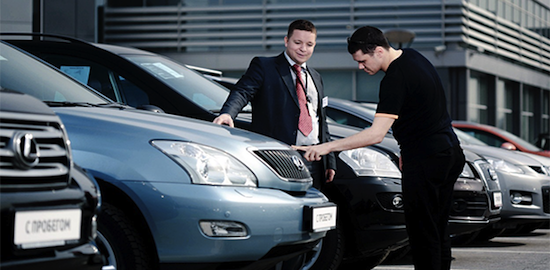
Buying a Used Car - Tips and Procedure
Many experienced motorists believe that buying a used car is more profitable than buying a new car in a car dealership. There are several reasons for this:
- the car will be cheaper;
- the car has passed a “hot” run-in;
- the choice of cars is wider, for the same money you can buy different cars by class - a 3-year-old Ford Focus or a 10-year-old Audi A6, for example;
- The car will be fully equipped.

However, so that buying a used car does not bring you complete disappointments, you need to properly assess its condition. What is the first thing to pay attention to?
First, you need to establish the “personality” of the car, verify the data indicated in the data sheet: VIN code, engine number and model, body number. All numbers should be easy to read. The PTS also indicates the body color and production date. In the service book you will find all the information about repairs. By the VIN code, you can find out the entire history of the car: from the date of production, to a possible criminal past.
Secondly, the car body needs to be examined very carefully:
- the paint should lie evenly and uniformly, without traces of drops and smudges;
- repainting of the body and individual places - evidence of an accident or corrosion;
- any bulges and dents are evidence of poor-quality repair work after an accident; using a magnet, you can determine the places where putty was applied;
- the joints of body parts or doors should not be protruding.
Third, check the technical part:

- turn on the ignition - only the parking brake sensor should light red;
- engine malfunctions will flash the oil pressure sensor;
- bubbles in the expansion tank - gases enter the cooling system, you need to change the cylinder head gasket;
- smoke from the exhaust pipe should be bluish, black smoke - evidence of malfunctions of the piston rings and the fuel system;
- if you plug the exhaust pipe, the engine should not stall;
- if the car “bites” with its nose or the “back” sags during braking, there are problems with the suspension and shock absorbers;
- if the steering wheel vibrates, the chassis is worn out.
Naturally, attention should be paid to the presence of leakage of working fluids. The backlash of the steering wheel and wheels indicates problems with the controls and chassis. The brake pads must have even wear, otherwise there is a problem with the brake master cylinder.
Remember that a used car should not be in perfect condition, there will always be problems, but it is better to find them on time and agree on a price reduction than to spend money on buying expensive spare parts later.
Loading…
